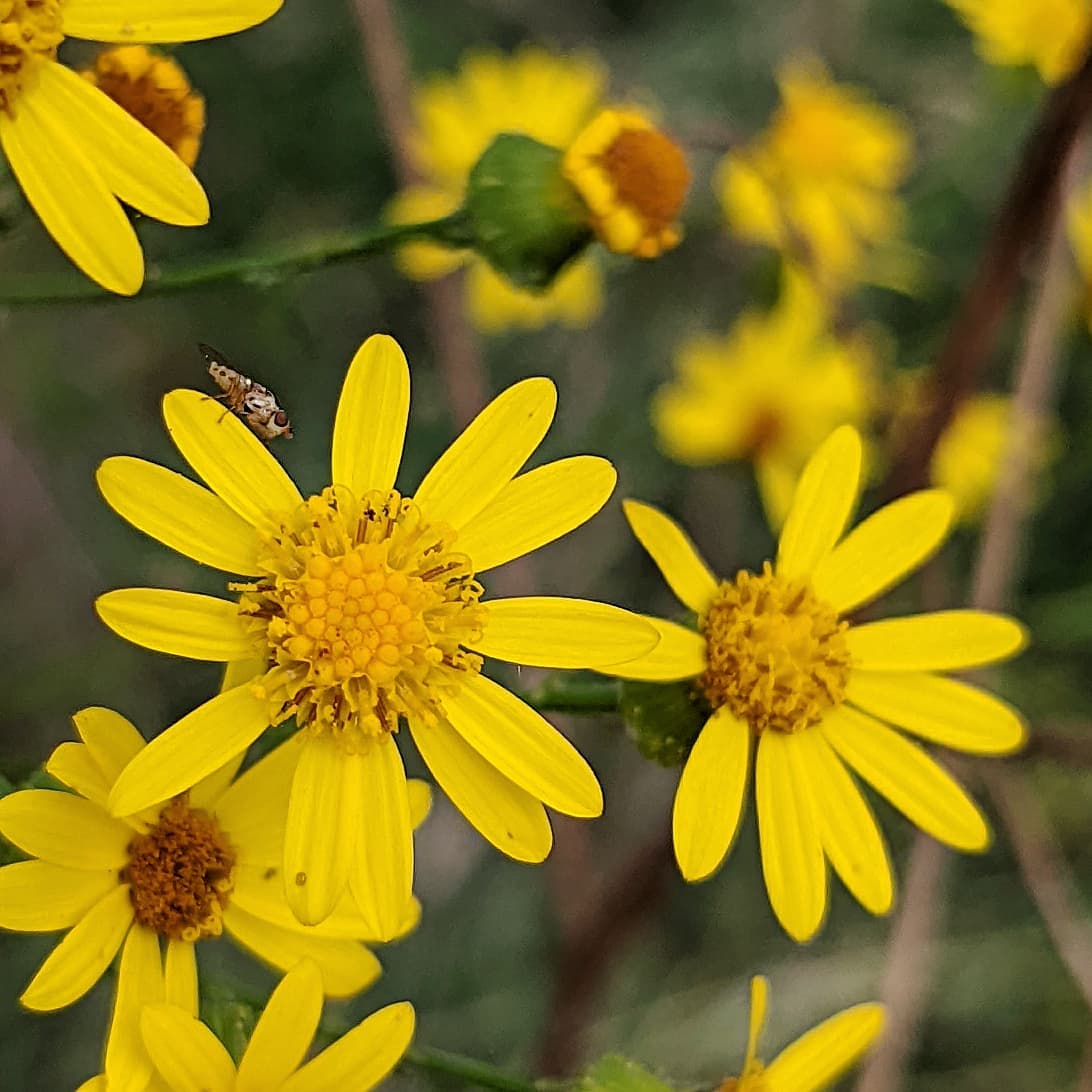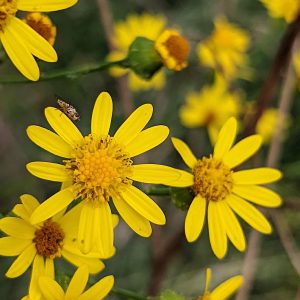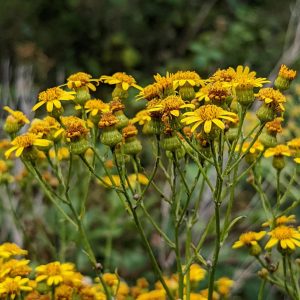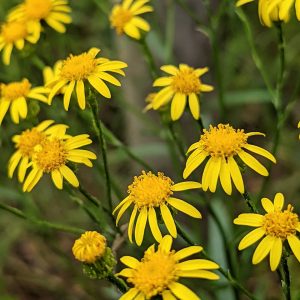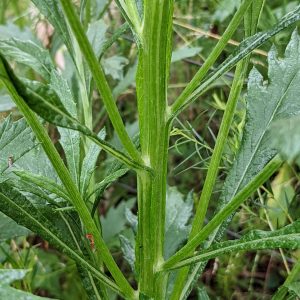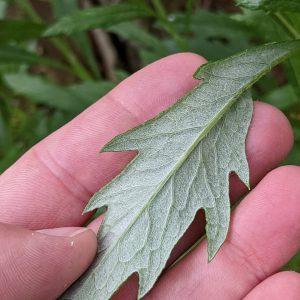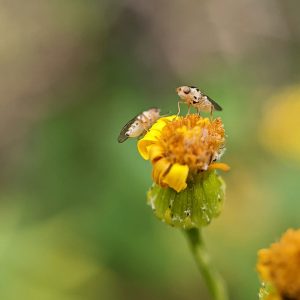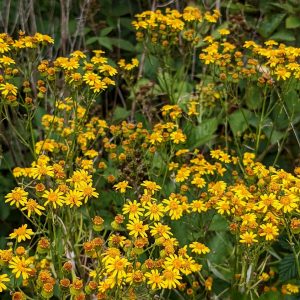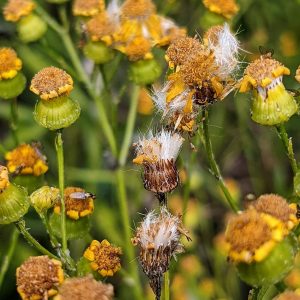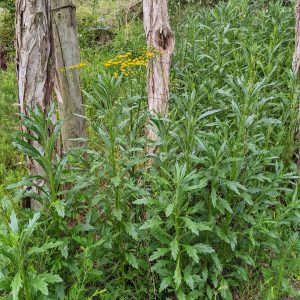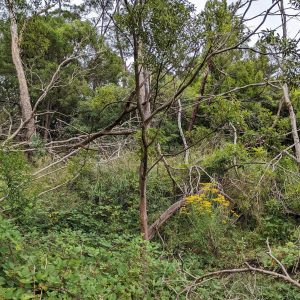Winged Groundsel (Senecio pterophorus), a South African aster distributed internationally through contaminated wool, shipping ballast and other materials.
Known commonly as African Daisy (as if this were the only one!?), we will adopt the more descriptive name.
Winged Groundsel was repeatedly introduced to Australia. Plants were collected in 1908-1909 at Coode Island, Williamstown and N. Melbourne, however this population apparently did not endure.
Introductions around Port Lincoln on SA’s Eyre Peninsula were more successful. First recognised at the Port Lincoln railway yards (collected from 1927, possibly introduced in WW1), by 1940 its spread for miles around Port Lincoln menaced locals, who called for extirpation ‘before the task becomes hopeless and much of the country is ruined.’ In 1942 the local council finally prevailed on the state to declare the weed noxious in that district, yet by this time it had spread to the Adelaide Hills (1940) and was soon at Meningie (1947) on the south-east coast; from there it spread further south and east.
In SA, the plant proved particularly suited to forming dense stands on disturbed ground, particularly after fire, scrub-clearing or heavy grazing. A rapid 1960s expansion across the Adelaide Hills triggered new concern, however years of spray programmes and hand pulling on public lands by scouts and school classes have done little to alter the permanence in that area of this prolific wind-blown seeder.
The species was also slipping across the border into Victoria, with collections in the far west in 1972, 1980 and 1982. It quickly crossed through the Wimmera, to Marysborough in 1986 and Sydney and Newcastle in NSW as early as 1987 and certainly from the late 1990s.
The 1980s also saw a population become established on the east side of the Mornington Peninsula, with collections made at Somerville in 1985 and behind Hastings in 1988. Although this metro population has been interpreted as having spread from SA, there are genetic distinctions (Vilatersana et al 2016) that could also imply a separate introduction event at Hastings.
View Original Post on Instagram
Search for information about Senecio pterophorus in the Flora of Victoria
View information and occurrences of Senecio pterophorus on the Atlas of Living Australia
